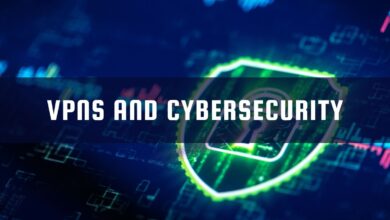What Is Perimeter Security In Cybersecurity?
Perimeter security in cybersecurity refers to the process of defending a company’s network boundaries from hackers, intruders, and other unwelcome individuals. This entails surveillance detection, pattern analysis, threat recognition, and effective response. Essential measures such as passwords, data protection, firewalls, antivirus, encryption, and network monitoring play a pivotal role in this defense, fortifying the network against various cyber threats.[1]
Each private network is encircled by a perimeter, serving as a secure wall between different networks, such as your company’s private intranet and the public internet. These perimeter security measures are integral to maintaining this boundary, ensuring that only authorized access is granted and that the integrity of the network is preserved.
Fast Facts
Unlike the public internet, your company’s private intranet is surrounded by a perimeter, which serves as a security barrier between two networks.
How Does Perimeter Security Work?
Your network support agency, Managed Service Provider (MSP), or sometimes your internal IT department provides measures that protect your network from external attacks via the public web. These risks include hacking efforts, malware, ransomware, and other attempts at network infiltration.
A network perimeter includes the following components:
- Intrusion Detection Systems (IDS)
- Intrusion Prevention Systems (IPS)
- Firewalls
- Border routers
- Unified Threat Management (UTM) systems
2023 Updates in Perimeter Security
As we progress through 2023, perimeter security in cybersecurity has seen significant advancements and shifts:
- Integration of AI and Machine Learning: AI-driven solutions are increasingly being deployed for real-time threat detection and response, enhancing the efficiency and accuracy of perimeter defenses.
- Rise of Zero Trust Architecture: This security model, assuming no implicit trust within or outside the network, has gained traction, emphasizing rigorous identity verification and least privilege access.
- Increased Focus on IoT Security: With the proliferation of IoT devices, there’s a heightened need for securing these endpoints, which often serve as entry points for cyber-attacks.
- Enhanced Cloud Perimeter Security: As more organizations move to the cloud, the focus on securing cloud perimeters has intensified, with advanced cloud-specific security solutions emerging.
- Regulatory Compliance: New regulations and standards are shaping perimeter security strategies, compelling organizations to align with evolving compliance requirements.
These updates reflect the dynamic nature of cybersecurity, underscoring the need for continuous adaptation and enhancement of perimeter security measures.
Fast Facts
AI-driven solutions are increasingly being deployed for real-time threat detection and response, enhancing the efficiency and accuracy of perimeter defenses.
In-Depth Exploration of Perimeter Security Components
Perimeter security in cybersecurity is not just a concept; it’s a layered defense mechanism composed of various components, each playing a crucial role in safeguarding a network’s boundary. This approach has become increasingly vital as the average number of cyberattacks and data breaches rose by 15.1% in 2021, highlighting the escalating prevalence of cyber threats despite existing security measures. [2] Let’s dive into the key components that form the backbone of effective perimeter security, understanding their significance in this ever-evolving landscape of cybersecurity challenges.
1. Firewalls: The First Line of Defense
- Functionality: Firewalls act as gatekeepers between your network and the outside world. They use a set of predefined rules to filter incoming and outgoing traffic, blocking unauthorized access while allowing legitimate communication.
- Significance: In the cybersecurity landscape, firewalls are indispensable. They prevent malicious traffic, such as hacking attempts and malware, from penetrating your network, thus serving as the primary barrier against cyber threats.
2. Intrusion Detection Systems (IDS): The Watchful Eyes
- Functionality: IDS systems continuously monitor network traffic, scanning for patterns that match known cyber threats. They act as an advanced surveillance system, identifying potential security breaches by comparing network activity against a comprehensive database of threat signatures.
- Significance: IDS systems are crucial for the early detection of cyber threats. By alerting network administrators to suspicious activities, they enable timely intervention to mitigate risks.
Fast Facts
Firewalls act as gatekeepers between your network and the outside world.
3. Intrusion Prevention Systems (IPS): Proactive Threat Mitigation
- Functionality: Building on IDS, IPS systems not only detect threats but also take active measures to prevent them from causing harm. They analyze data packets and, based on preset rules, decide whether to allow or block them, often without the need for human intervention.
- Significance: IPS systems elevate network security by actively preventing known threats from infiltrating the network. This automated response mechanism is vital for maintaining continuous network protection.
4. Border Routers: Managing Traffic at the Edge
- Functionality: Border routers are positioned at the edge of your network, directing traffic between your internal network and the external internet. They play a key role in managing the flow of data, ensuring that only legitimate traffic enters or leaves the network.
- Significance: In perimeter security, border routers are essential for controlling access points to the network. They act as intermediaries, filtering traffic and protecting the network from external threats.
5. Unified Threat Management (UTM) Systems: Comprehensive Security Solutions
- Functionality: UTM systems combine the features of firewalls, IDS, and IPS, along with additional security functions like antivirus, anti-spyware, and VPN services. They provide a holistic security solution from a single platform.
- Significance: UTM systems simplify the complexity of network security by integrating multiple security functions. This not only enhances security coverage but also streamlines management and response to threats.
Tailoring Perimeter Security to Industry Needs
Perimeter security strategies must be customized to fit the unique requirements of different industries, especially in the context of digital transformation. This transformation, while driving business innovation, also poses significant cybersecurity challenges for business resilience.[3]
It emphasizes the need for robust security measures to mitigate evolving cyber threats. As industries adapt to digital advancements, their perimeter security strategies must evolve correspondingly to address these new vulnerabilities and protect against the increasing sophistication of cyberattacks. Here’s how major industries and organizations utilize perimeter security:
- Financial Sector:
- Focus: Robust firewalls and intrusion detection systems.
- Goal: Protect sensitive financial data from cyber-attacks.
- Healthcare Organizations:
- Focus: Stringent access controls and data encryption.
- Goal: Secure patient data and comply with privacy regulations.
- Manufacturing Industry:
- Focus: Protecting industrial control systems.
- Goal: Prevent sabotage and ensure operational continuity.
- Retail Businesses:
- Focus: Securing online transactions and customer data.
- Goal: Protect against data breaches and maintain customer trust.
Each industry requires a tailored approach to effectively address its specific threats and vulnerabilities, ensuring a robust defense against cyber threats.
Final Thoughts
In conclusion, the effective customization of perimeter security strategies across various industries is imperative in the face of digital transformation and rising cyber threats. By understanding and adapting to industry-specific needs and emerging challenges, organizations can enhance their resilience against cyberattacks, ensuring the protection of their digital assets and maintaining the trust and confidence of their stakeholders in an increasingly interconnected and digitally reliant world.
Further, you can train yourself on cybersecurity by undergoing training programs like cyber security awareness training, which will help you learn effective measures to protect your data and maintain its credibility. Investing and prioritizing training can be beneficial for a person who deals with data often and as a part of their occupational lives. Read more about VPNs as a reverse proxy from our resources at Security Forward today.





